Shopping for an artist can be challenging, especially when they’re obsessed with realism.
You want to give them something thoughtful and useful, but if you’re not deeply immersed in the art world yourself, it’s easy to feel overwhelmed by all the pencils, paper types, and gadgets available.
I get it. I’ve been there, both as the gift-giver and the artist.
This guide is for anyone who wants to give a meaningful, practical, and creativity-boosting gift to the realism artist in their life without second-guessing whether it’ll just collect dust in a drawer.
Whether it’s a birthday, a graduation, or a random weekend surprise, here are 13 perfect gifts that’ll actually get used (and loved).
When to Gift These (Other Than Birthdays)
While birthdays and holidays are obvious occasions, you don’t need a special calendar date to celebrate your favorite artist. These gifts are also perfect for:
- Graduation from art school or classes to help them build their post-school toolkit.
- First gallery exhibition or commission work: Mark the moment with something they’ll use in their new chapter.
- A creative rut: A thoughtful gift can reignite their spark or help them kickstart creative resolutions in the new year.
- Personal milestones such as moving into a new studio, finishing a big project, or switching mediums.
- Anniversaries: especially if you’re in a relationship with an artist and want to give something personal and supportive.
- “Just because” gifts: Sometimes those are the most appreciated, and artists can never have enough supplies.
13 Perfect Gift Ideas for Artists on Any Occasion
1. Premium Graphite Pencil Set
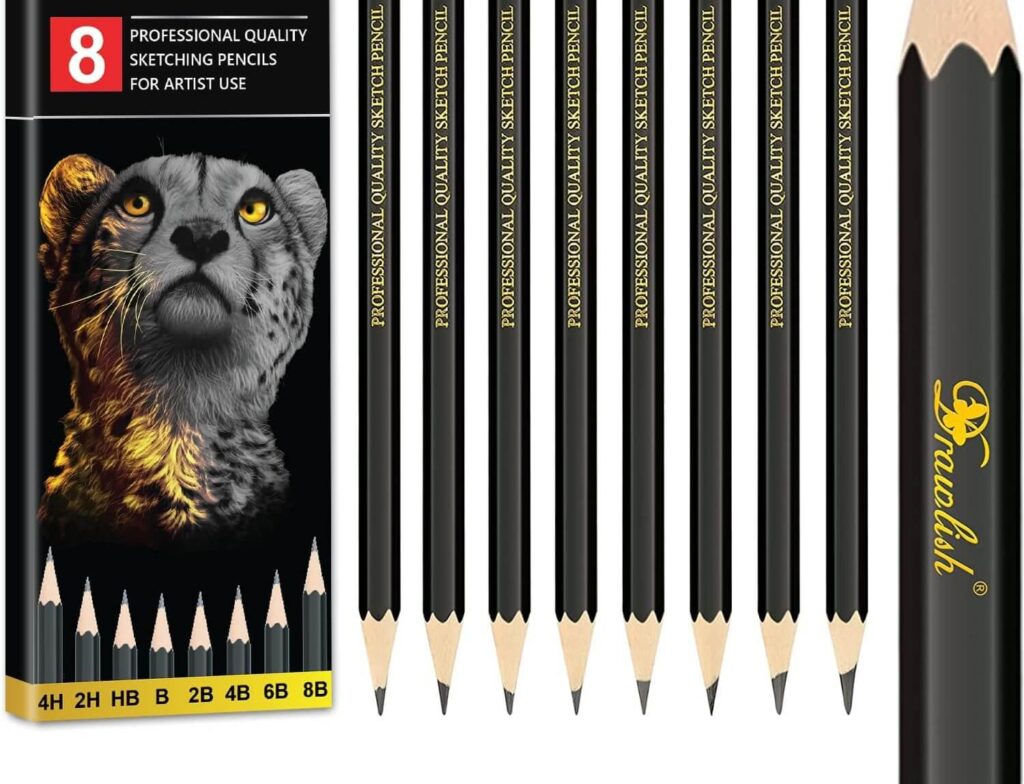
Realism artists don’t just use one pencil. Instead, they rely on a whole range of hardness to get those lifelike values.
A good set like the Staedtler Mars Lumograph includes everything from soft 8B (great for deep shadows) to hard 6H (perfect for subtle details and light sketching). The Mars Lumograph Black line also offers ultra-matte blacks that avoid the shiny finish some graphite pencils leave behind.
This isn’t just about variety. It’s about control. With a full set, artists can shade smoothly, build depth, and create crisp lines – all in one drawing.
2. Pro-Grade Drawing Paper Pad
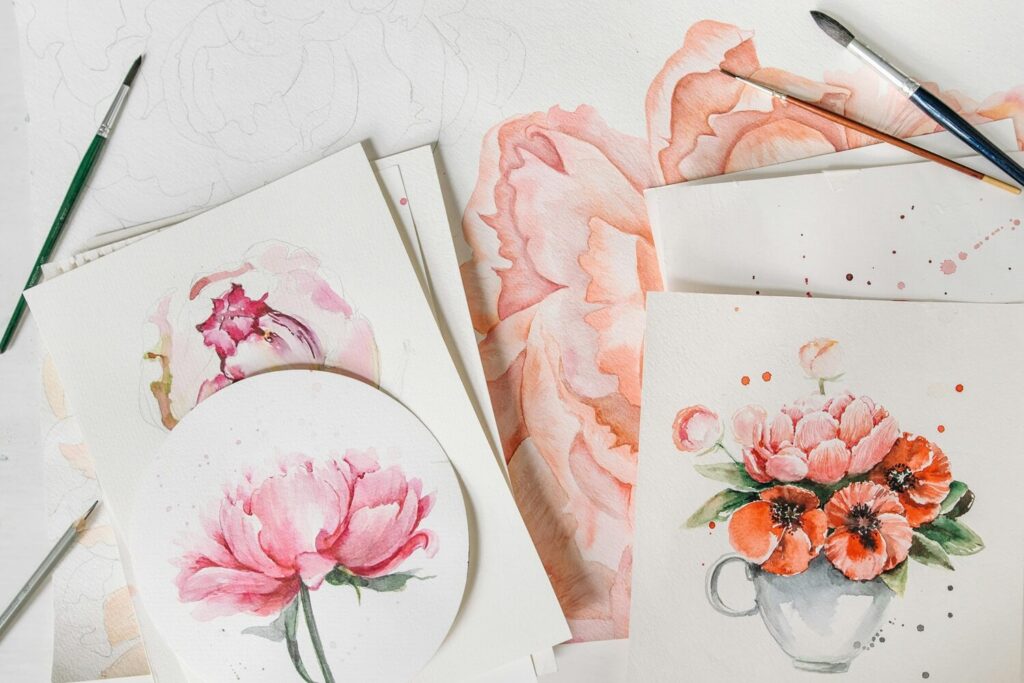
A great paper is vital. I used to buy cheap pads and always wondered why my drawings felt flat. Even worse, sketching on normal printing paper. Then I tried Strathmore 400 Series and never looked back.
The paper is acid-free and has a fine texture (aka tooth) that grips the graphite beautifully.
It’s thick enough to handle erasing and layering without tearing or buckling. That means an artist can rework an area over and over without ruining the whole piece – a must for detailed realism.
3. Light Box for Tracing
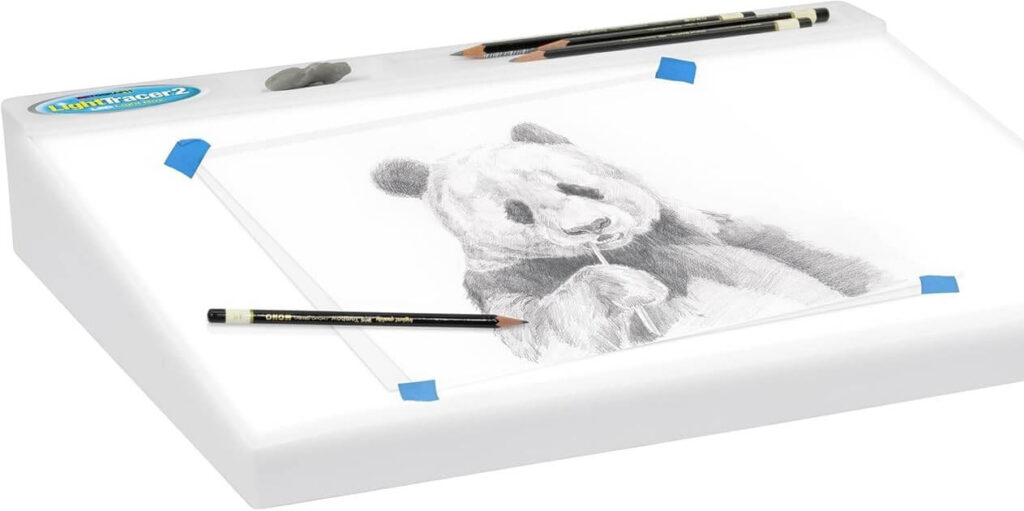
Although controversial in the artsphere, tracing isn’t cheating but rather a tool. Artists often use light boxes to refine compositions, transfer sketches to clean paper, or check proportions.
The Artograph LightTracer 2 is a solid choice with its bright, even illumination and large surface area. It’s especially useful for portrait artists who want to block in features accurately before diving into all the subtle shading.
Bonus: it saves time and keeps the original reference sketch intact.
4. Blending Stumps and Tortillon Set
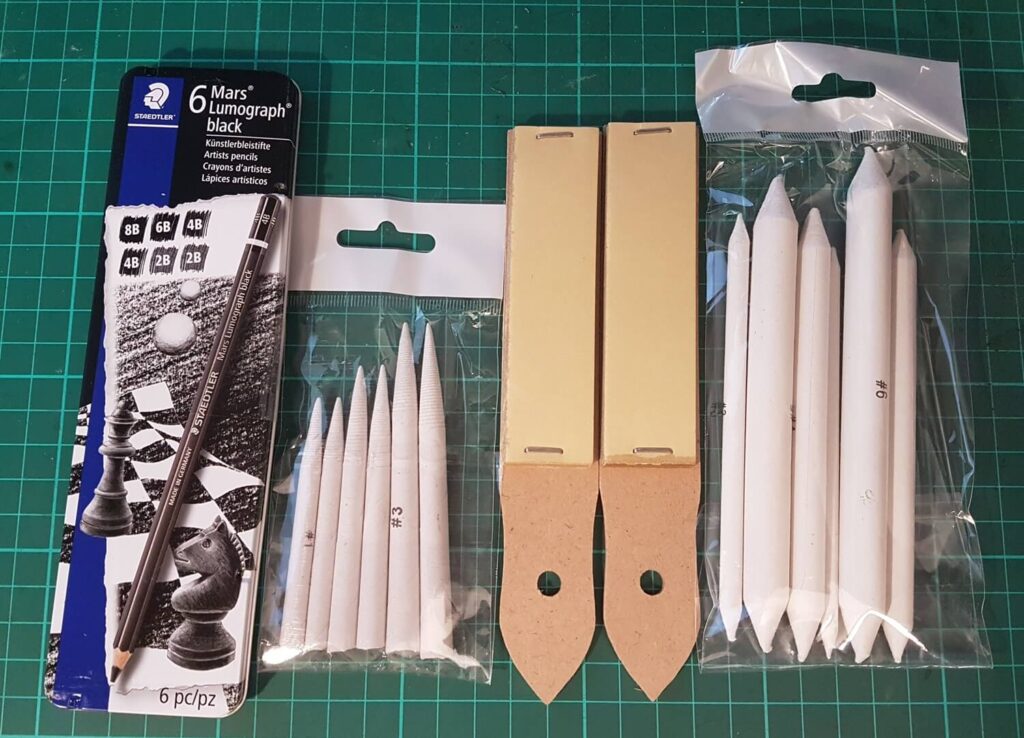
You know those smooth gradients in photorealistic art?
Chances are, a blending stump played a role. These tightly rolled paper tools help artists smudge graphite in a controlled way, perfect for things like soft shadows, skin textures, and fabric folds.
This isn’t the kind of gift people usually think to buy for themselves, but once they try it, they won’t want to go without. It’s a small, inexpensive item that makes a huge difference.
5. Eraser Duo: Kneaded and Vinyl
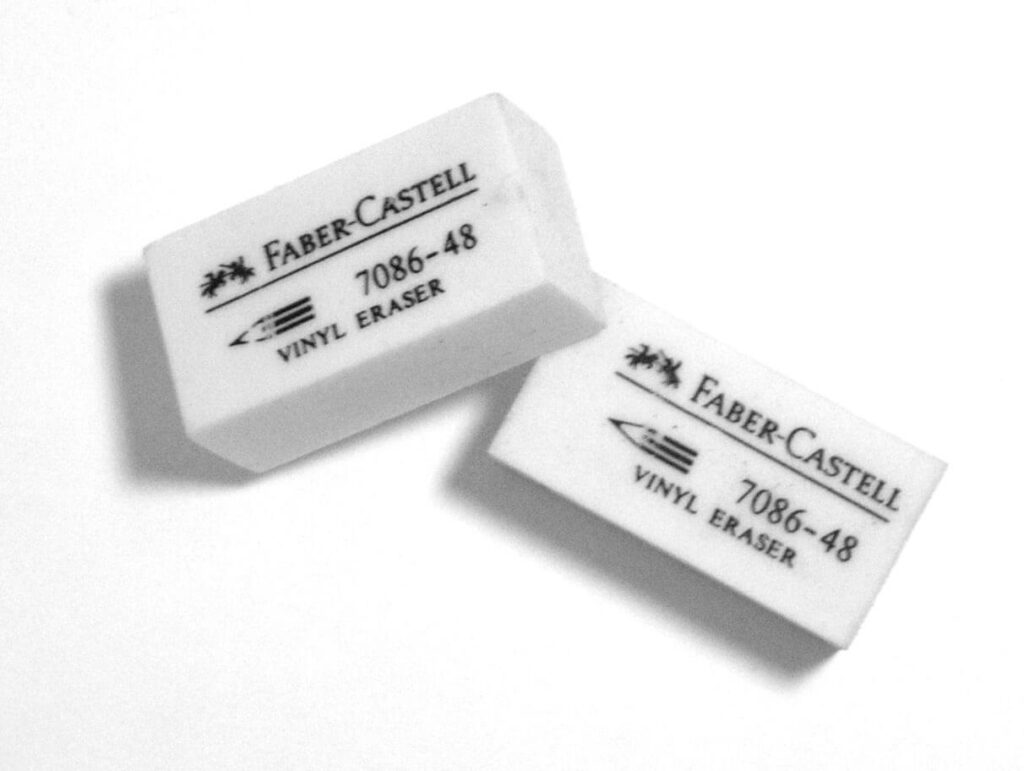
Erasers are essential.
Not just for mistakes but for highlights, soft textures, and refinements. A kneaded eraser can be molded into tiny points to lift graphite from the page with precision. It’s also crumb-free and super gentle on paper.
Pair that with a sturdy vinyl eraser (like the Staedtler or Tombow Mono) for cleaning up strong lines and areas that need more forceful correction. Having both gives an artist total control over light, shadow, and texture.
6. “Drawing Realistic Textures in Pencil” Book by J.D. Hillberry
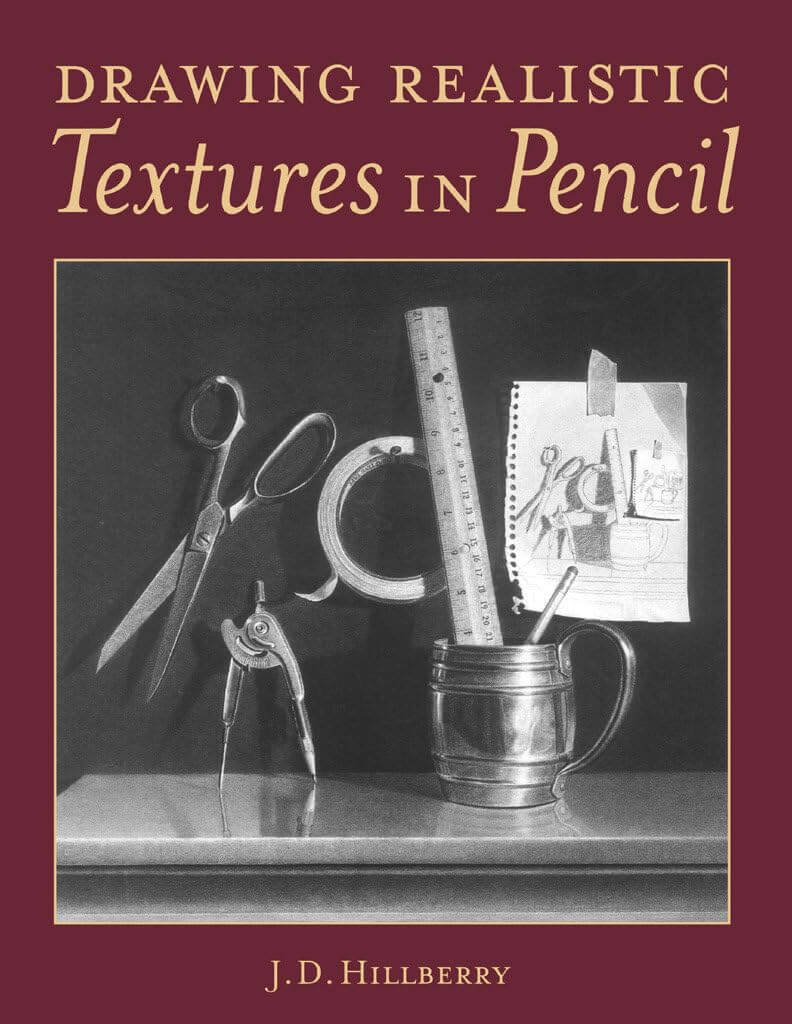
This book is like a realism bible.
Hillberry breaks down how to draw convincing wood grain, glass reflections, wrinkles, and more. But he doesn’t just tell you what to do, he shows you with clear visuals and explanations.
Even if someone’s been drawing for years, there’s a good chance they’ll learn something new from this book. It’s also incredibly motivating. Every time I flip through it, I want to run and pick up a pencil.
7. Portable Tabletop Easel
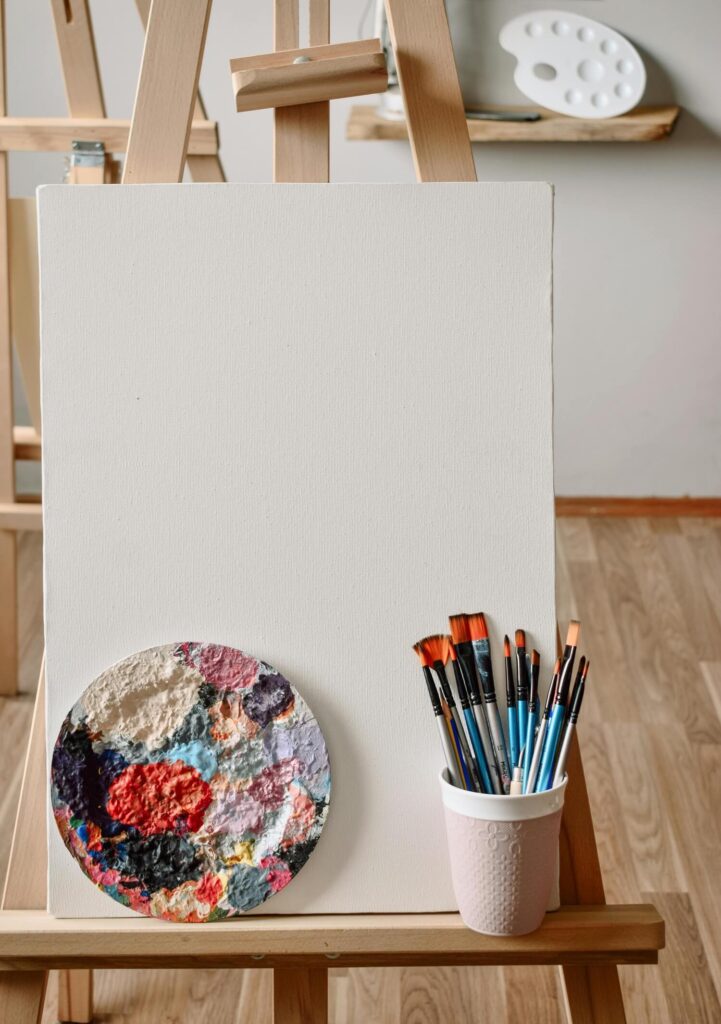
A lot of artists don’t realize how helpful an easel can be until they have one. Working flat on a desk can lead to awkward posture and perspective distortion.
A tabletop easel lifts the work closer to eye level, making it easier to draw accurately and more comfortably.
8. Full-Spectrum Desk Lamp
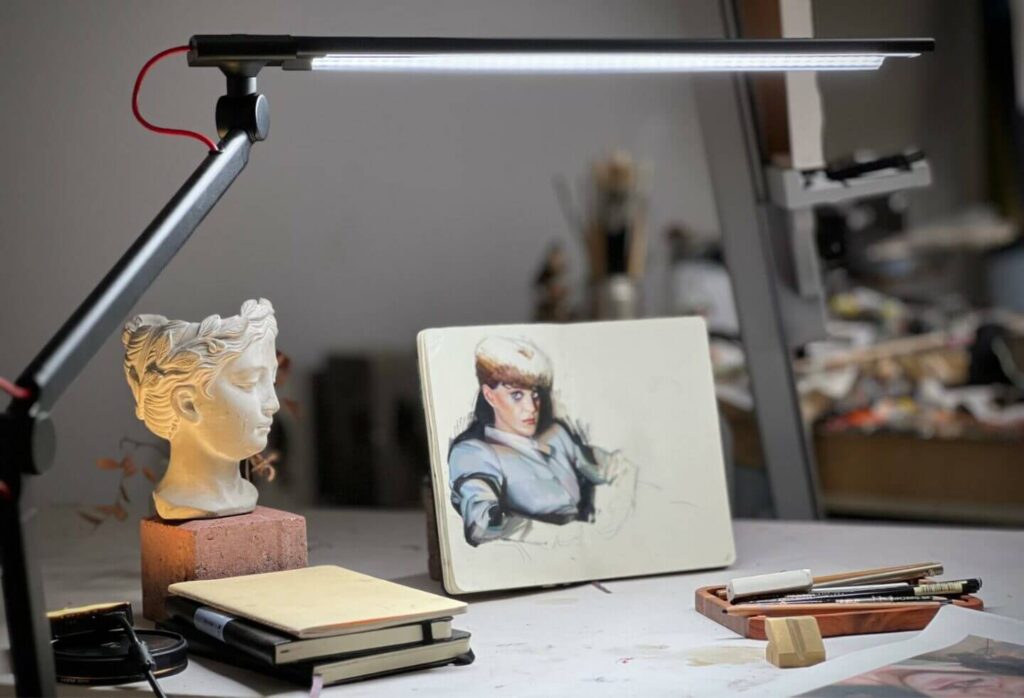
Image: Alpay Efe via Redgrass
Lighting is everything in realism. Poor light can throw off values, strain the eyes, and distort colors. The OttLite Renew LED Desk Lamp utilizes natural daylight-mimicking bulbs, which reduce glare and enhance the visibility of fine details.
It’s ideal for long drawing sessions, especially in the evening or in dimly lit rooms. The best part? It helps reduce eye fatigue, which is a real issue for artists who stare at tiny lines for hours.
9. Precision Dual-Hole Pencil Sharpener
A bad sharpener can break leads and waste expensive pencils. That’s why a good one, like the Faber-Castell double-hole sharpener, is a smart gift. It offers two sizes: one for standard pencils and another for larger or softer cores.
Artists can get a needle-sharp tip for detail work or a wider point for shading. It’s portable, clean, and doesn’t chew up the pencils like cheap ones do.
10. Subscription to The Artist’s Magazine
Realism artists love learning, and this magazine delivers fresh tips, interviews, and tutorials every month. A subscription to The Artist’s Magazine is like sending inspiration directly to their mailbox.
It also introduces them to other artists, new techniques, and industry trends – something that’s hard to find in just one place.
It’s not just reading material. It’s motivation.
11. Proko Gift Card
If your artist is more into digital learning, Proko is the go-to platform for online art courses. I’ve personally used their figure drawing and shading classes, and they’re some of the best I’ve found.
This is why I’m not compensated to recommend them.
A gift card lets the recipient choose what they want to learn, whether it’s anatomy, portraiture, or texture rendering. It’s great for self-taught artists or anyone looking to sharpen their skills from home.
12. Krylon Workable Fixatif Spray
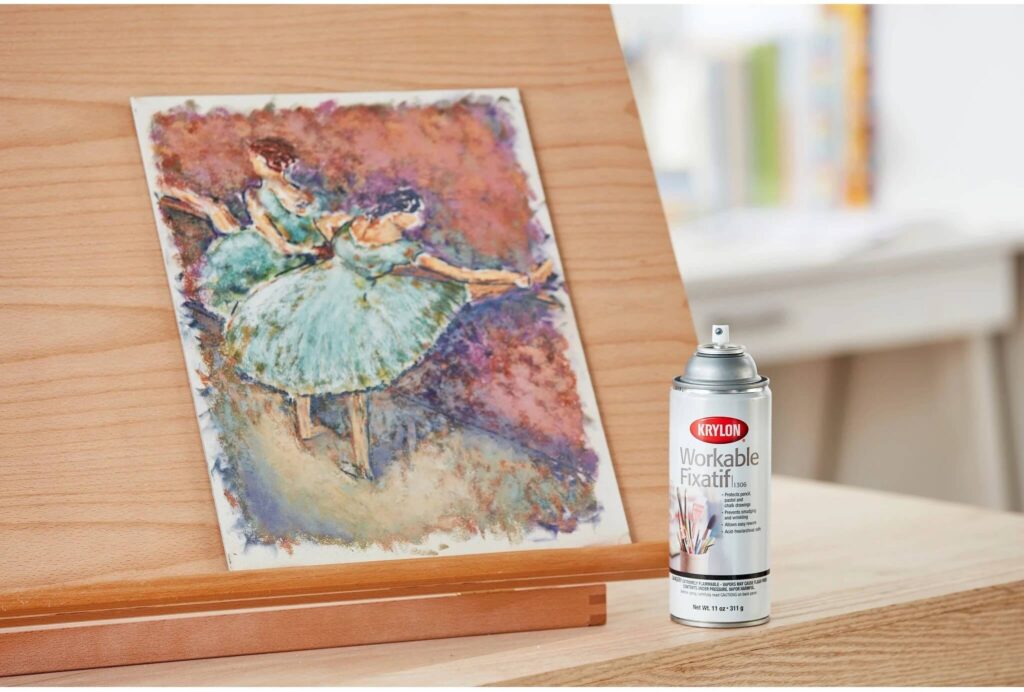
Image: Military Range
Once a graphite piece or charcoal is finished, there’s always that fear of smudging it accidentally. Krylon’s Workable Fixatif is a clear spray that locks the drawing in place without permanently sealing it.
Hence, the artist can still go back and make changes if needed.
It also prevents yellowing over time and adds a layer of protection for archival purposes. A must-have for anyone selling or displaying their work. Of course, there are other options of fixative sprays, but this one stands out.
13. Faber-Castell Polychromos Colored Pencils
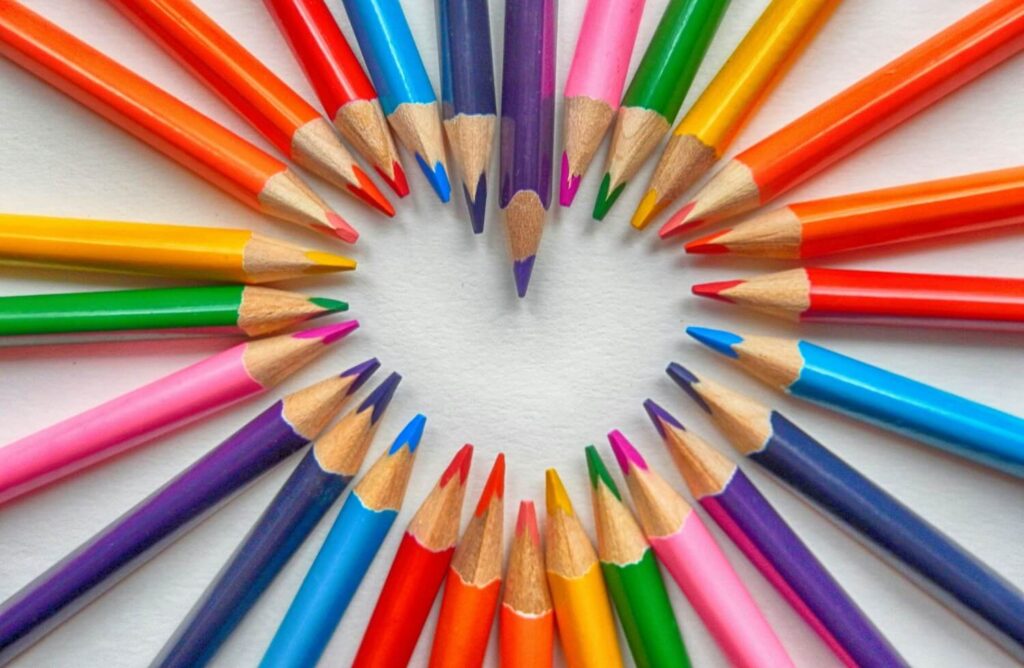
Not all realism is done in black and white.
For artists working in color, Polychromos pencils are a dream. Their oil-based cores are soft but not waxy, blend beautifully, and hold a sharp point longer than most brands.
They’re also highly lightfast, which means the colors won’t fade over time. These are premium pencils. Therefore, giving them as a gift shows you really went the extra mile.
Conclusion
When you give an artist a gift that supports their craft, you’re not just giving them stuff. Instead, you’re investing in their passion.
And honestly, there’s something special about receiving tools that say, “I see your talent. I believe in it.”
So, whether you’re shopping for a holiday, a milestone, or just want to make someone’s day, I hope this guide gave you some solid ideas. Realism may be a niche in the art world, but the right supplies can make all the difference.
If you’re still unsure, go with something from this list and include a short, encouraging note. That personal touch?
It means more than you know.

